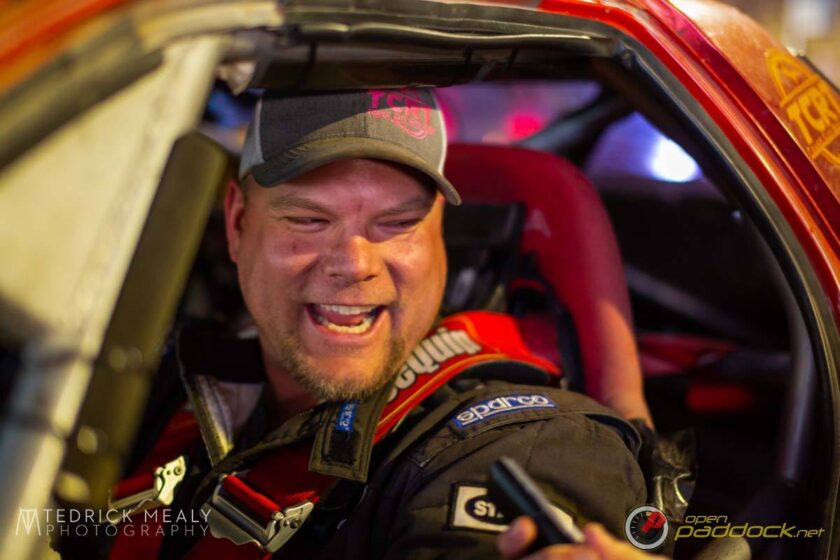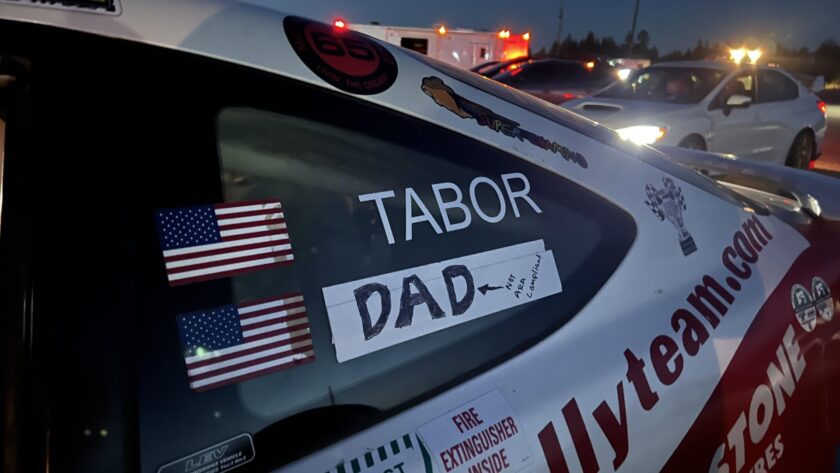Last night, sandwiched between two lengthy NASCAR announcements, Texas Motor Speedway President and promoter extraordinaire Eddie Gossage announced plans for the 2011 IndyCar event at his facility in Dent County, TX.
no images were found
The good news is that Texas will again be the first event after the Indianapolis 500 Mile Race but with a week break between them. This is a much needed break for both the teams and the fans as the Month of May as exciting and enjoyable as it is, is also very exhausting. The questionable aspect of the announcement was that next year’s event will feature twin 275-km races rather than a single 550-km race. As an aside, I never knew why Eddie insists on using the metric measure rather than miles except perhaps to give the illusion that the race is longer than it is. The announcement of twin races isn’t really a surprise. Most who have been keeping a finger on the IndyCar pulse knew that an event like this was being kicked around. Unfortunately, the only real details revealed in the announcement were the length of the two races and the date, Saturday, June 11th.This idea featuring a doubleheader certainly isn’t knew to Championship open-wheel racing. It was a feature of both USAC and CART in the late 60s and through the 70s.
“I think it is important that we elevate all of our races to give them a big-event feel. Eddie Gossage and Texas Motor Speedway certainly are taking things to the next level with the Firestone Texas Two-Step doubleheader. It was a concept that was first run by USAC in the 1960s, so it plays on an Indy car tradition but also brings a new no limits feel to the event.” — Randy Bernard, Read more quotes from Mr. Bernard and Bobby Unser at IndyCar.com
This time around, the twin races will award half the usual points for each race, but it doubles the potential risk for teams, especially the smaller ones who don’t have a lot in the way of spare parts or backup chassis. There are a lot of pros and cons in this type of format, and I’ve been trying to think through them over the previous evening and this morning (after coffee). Here are some of my thoughts.
The Up-Side
Unique event
The uniqueness of the event will certainly draw attention and potentially sell tickets. Having a week break between the Greatest Spectacle in Racing and the “Texas Two-Step” as they’re calling it will help put butts in the seats as well. Although the crowd was still strong this year, attendance was certainly down from previous years and this change could be enough of a novelty to draw in some who were sitting on the fence before.
Opportunity for multiple winners
Having two feature races will allow for more potential winners for the weekend. Its not likely as most of the time in the past, a single driver has won both races in a doubleheader. Reality and perception are different beasts, though, and the perception that your favourite small-team driver could win, even if they lose the first race, is another potential bonus for fans.
Reconnects with Championship open-wheel racing
Ever since Randy Bernard took up the reigns of the Indy Racing League, he has sought to bring back some of the nostalgia and reconnect with the extensive history of Championship open-wheel racing in America. One of the things that many of us have railed against over the past thirteen years is the perception that the IRL doesn’t see any history beyond 1996. Bernard has been working hard to remove that barrier and reclaim the rich history of IndyCar racing regardless of what sanctioning body ruled over it at the time. I say good on him for that!
The Challenges
Expense for small teams
Any race is a challenge for a small team with a budget that is barely enough to make ends meet.
no images were found
Crash damage, especially on a high-speed oval like the Texas Motor Speedway, gets expensive fast. Many of the small teams may have a supply of spare parts, but won’t necessarily have a spare chassis. If they crack the tub in Race 1, then game over. They’re done for the weekend and miss out on any chance for points in Race 2. I’m not going to make too much of this challenge to the twin-race event, however. Racing is risk. Those who manage that risk best tend to be successful, those who don’t won’t last long in this game anyway. Not to sound too cold about it, but these teams know the game they’re getting into, so I’m not going to spend too much time worrying on their behalf. Don’t misconstrue my stance with a disregard for the smaller teams. In fact, I love cheering for the HVMs, Conquests, and Sarah Fisher Racings in any sport, and particularly in IndyCar racing. I’m just saying that they’re big boys and girls and can decide for themselves what level of risk to take upon themselves.Timing for the two races
The heat in TX, even in early June is brutal! This year, the daytime temps were well into the 100s and at the track, it was even worse. The races at Texas in recent years have been held at dusk, when there’s a breeze and the temperatures calm down a bit. Its actually very pleasant, weather-wise, but the race ends pretty late. With running two races, even though it adds up to the same total distance as before, the length of the even would have to be extended. Either the event would have to begin earlier in the day, therefore closer to the brutality of the Texas summertime heat, or last longer into the evening making it an even later night than it already is.
Fuel strategy
My biggest concern about the twin races is their length: 114 laps each. The fuel cell in today’s IndyCar holds 22 gallons of ethanol. To make the race a 1-stopper, a car would have to make 3.86 mpg. With help from some yellow flags, a driver with a delicate right foot could make it. This worries me. Rather than seeing two shootout-style events, we could instead see two fuel-mileage races. This would suck the life right out of what has been a great event in the past. A two-stopper could do it while only needing to maintain 2.59 mpg which one could achieve driving flat out under green flags the entire 171 miles.
So there are my thoughts. What are your’s? Agree? Disagree? Do you see other potential positives to this, or additional challenges? Let us know in the comment section below.




I think the idea is very cool. No other major motorsport series in the states does this as a points paying event during the race calendar. Gatorade Duels at Daytona do not count as they are different cars and award no points. I like the idea and really welcome the week off between as this year’s Texas race was really a joke coming right after the 500.
[…] This post was mentioned on Twitter by BJ (Juice) Johnson and Doug Patterson, Openpaddock.net. Openpaddock.net said: New Content: IndyCar – The Texas Two-Step: Cool, Gimmick, or Both? – http://tinyurl.com/257bq8b […]
I would think that when (not if) an accident happens they could waste a good 1/4 of a race cleaning up a single incident. You get two or more incidents and it’s not unreasonable to think you could be looking at a 50 lap race. That’s probably stretching it a bit but I think people here see what I’m thinking. Maybe they either pull out the red flag or they don’t count yellow flag laps. I vote for no yellow flag laps. Maybe they also force everyone to have at least one pit stop during any green flag run of 30 laps or more. Just ideas.
While on the subject of no yellow flag laps I get to thinking about sprint car racing. Specifically the WoO’s. While it’s great that they have been putting on shows with 40 or 50 laps I think it’s beyond stupid that they have a planned stop for refueling. Why didn’t they just have twin 25’s?? Stupid. I’ve thought for years this business about changing tires and adding fuel or other changes every time they have a red flag is ruining the show. My opinion is there is NO WORK OF ANY KIND done to the car during a red flag and if a driver has to change a tire for a puncture or other damage they go to the back. This rule also applies to cars involved in the incident. Anybody remember USAC Twin 50’s?
I agree with Alan, The yellow flag laps shouldn’t count. to go one step further, the driver resumes the position they held prior to the caution coming out, unless they are the source of the caution. Thats how they do it at the local short tracks. It keeps the racing on the track and not off pit road, which I also agree, has hurt the sport.
OR, give everybody sticky gumball tires that won’t last for a full fuel load. Tire conservation tends to be more exciting than fuel conservation as we saw at Sonoma. It invites more passing opportunities. Then the problem becomes Marbles and a one groover.
OR,,, Backwards Barnhardt set the race distance at 114 laps, just so it would become a fuel race.
All very good ideas. Especially the non counting of yellow flags. Maybe Firestone can bring the super soft tires they used at Sonoma out to Texas and see how long the right sides would last?
Speaking of the no work on red flag comment, you brought back a favorite memory of mine from of all things NASCAR. I remember when I was a mega fan boy and Sterling Marlin got out of his car during a red flag and starting smashing panels back together at Daytona or Talledega. Got a good laugh of that today!